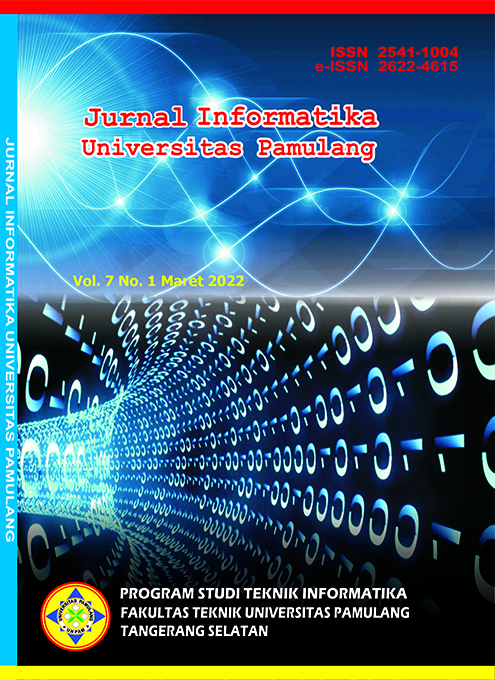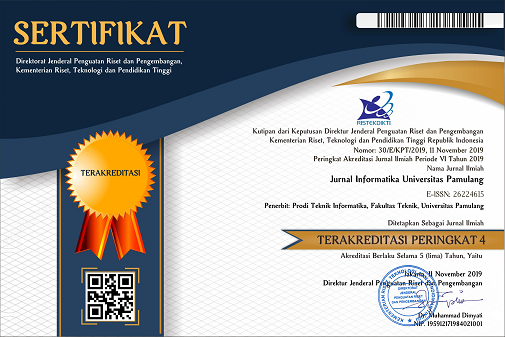Analisis Voice of Customer dari Ulasan Pengguna Produk Smartphone pada Online Marketplace menggunakan Text Mining
DOI:
https://doi.org/10.32493/informatika.v7i1.14471Keywords:
Voice of Customer, Product Review, Text Mining, Topic ModelingAbstract
Advances in information technology make smartphones become one of the products owned by almost all people of productive age. With so many smartphone manufacturers today, especially at the global level, the competition to present best-selling smartphone products in the market is becoming very tight. One of the most crucial things in product development is how manufacturers can capture the opinions and desires of potential users for a product and make it one of the considerations in product development. User reviews are data that is classified as User Generated Content (UCG) and can be used as material for conducting consumer analysis in the initial phase of product development. One of the problems faced in utilizing the data is the form of data in the form of unstructured text and the amount is very large. This problems can be solved by using one approach in natural language processing, namely topic modeling. By using topic modeling, computers can extract the essence of customer reviews on the internet which are very large in number into a more structured and easy-to-understand form. In this research, we used topic modeling to gain an insight from customer review over smarthphone products. From our experiment we can infer a knowledge about the customers’ concern related to the purchased smartphones.
References
Bashir, N., Papamichail, K. N., & Malik, K. (2017). Use of social media applications for supporting new product development processes in multinational corporations. Technological Forecasting and Social Change, 120, 176-183.
Blei, D. M., Ng, A. Y., & Jordan, M. I. (2003). Latent dirichlet allocation. the Journal of machine Learning research, 3, 993-1022.
Hickman, L., Thapa, S., Tay, L., Cao, M., & Srinivasan, P. (2020). Text preprocessing for text mining in organizational research: Review and recommendations. Organizational Research Methods, 1094428120971683.
Hidayanti, I., Herman, L. E., & Farida, N. (2018). Engaging customers through social media to improve industrial product development: the role of customer co-creation value. Journal of Relationship Marketing, 17(1), 17-28.
Hutto, C., & Gilbert, E. (2014, May). Vader: A parsimonious rule-based model for sentiment analysis of social media text. In Proceedings of the International AAAI Conference on Web and Social Media (Vol. 8, No. 1).
Jelodar, H., Wang, Y., Yuan, C., Feng, X., Jiang, X., Li, Y., & Zhao, L. (2019). Latent Dirichlet allocation (LDA) and topic modeling: models, applications, a survey. Multimedia Tools and Applications, 78(11), 15169-15211.
Jiao, Y., Wu, Y., & Lu, Q. S. (2020). Improving the performance of customer participation in new product development: the moderating effect of social media and firm capabilities. Asian Journal of Technology Innovation, 1-21.
Karami, A., Lundy, M., Webb, F., & Dwivedi, Y. K. (2020). Twitter and research: a systematic literature review through text mining. IEEE Access, 8, 67698-67717.
Kherwa, P., & Bansal, P. (2020). Topic modeling: a comprehensive review. EAI Endorsed transactions on scalable information systems, 7(24).
Lai, S., Liu, K., He, S., & Zhao, J. (2016). How to generate a good word embedding. IEEE Intelligent Systems, 31(6), 5-14.
Liu, F., & Deng, Y. (2020). Determine the number of unknown targets in Open World based on Elbow method. IEEE Transactions on Fuzzy Systems, 29(5), 986-995.
Medhat, W., Hassan, A., & Korashy, H. (2014). Sentiment analysis algorithms and applications: A survey. Ain Shams engineering journal, 5(4), 1093-1113.
Mikolov, T., Grave, E., Bojanowski, P., Puhrsch, C., & Joulin, A. (2017). Advances in pre-training distributed word representations. arXiv preprint arXiv:1712.09405.
Rautela, S., & Virani, S. (2019). Leveraging Social Media for Customer Participation in New Product Development-A Conceptual Framework. Annual Research Journal of Symbiosis Centre for Management Studies, 7, 15-27
Salloum, S. A., Al-Emran, M., Monem, A. A., & Shaalan, K. (2017). A survey of text mining in social media: facebook and twitter perspectives. Adv. Sci. Technol. Eng. Syst. J, 2(1), 127-133.
Sandor, L., Midura, J., Abedin, S., Ingber, G., Pederson, M., Sander, T., & Flower, A. (2018). Social media in product development. In 2018 Systems and Information Engineering Design Symposium (SIEDS) (pp. 88-93). IEEE.
Wu, L., Yen, I. H., Xu, K., Xu, F., Balakrishnan, A., Chen, P. Y., & Witbrock, M. (2018). Word Mover's Embedding: From Word2Vec to Document Embedding. In EMNLP 2018: Conference on Empirical Methods in Natural Language Processing. Association for Computational Linguistics.
Zhao, R., & Mao, K. (2017). Fuzzy bag-of-words model for document representation. IEEE transactions on fuzzy systems, 26(2), 794-804.
Downloads
Published
Issue
Section
License
Authors who publish with this journal agree to the following terms:
- Authors retain copyright and grant the journal right of first publication with the work simultaneously licensed under a Creative Commons Attribution-NonCommercial 4.0 International (CC BY-NC 4.0) that allows others to share the work with an acknowledgement of the work's authorship and initial publication in this journal.
- Authors are able to enter into separate, additional contractual arrangements for the non-exclusive distribution of the journal's published version of the work (e.g., post it to an institutional repository or publish it in a book), with an acknowledgement of its initial publication in this journal.
- Authors are permitted and encouraged to post their work online (e.g., in institutional repositories or on their website) prior to and during the submission process, as it can lead to productive exchanges, as well as earlier and greater citation of published work (See The Effect of Open Access).
Jurnal Informatika Universitas Pamulang have CC-BY-NC or an equivalent license as the optimal license for the publication, distribution, use, and reuse of scholarly work.
In developing strategy and setting priorities, Jurnal Informatika Universitas Pamulang recognize that free access is better than priced access, libre access is better than free access, and libre under CC-BY-NC or the equivalent is better than libre under more restrictive open licenses. We should achieve what we can when we can. We should not delay achieving free in order to achieve libre, and we should not stop with free when we can achieve libre.
Jurnal Informatika Universitas Pamulang is licensed under a Creative Commons Attribution-NonCommercial 4.0 International (CC BY-NC 4.0)
YOU ARE FREE TO:
- Share : copy and redistribute the material in any medium or format
- Adapt : remix, transform, and build upon the material for any purpose, even commercially.
- The licensor cannot revoke these freedoms as long as you follow the license terms





